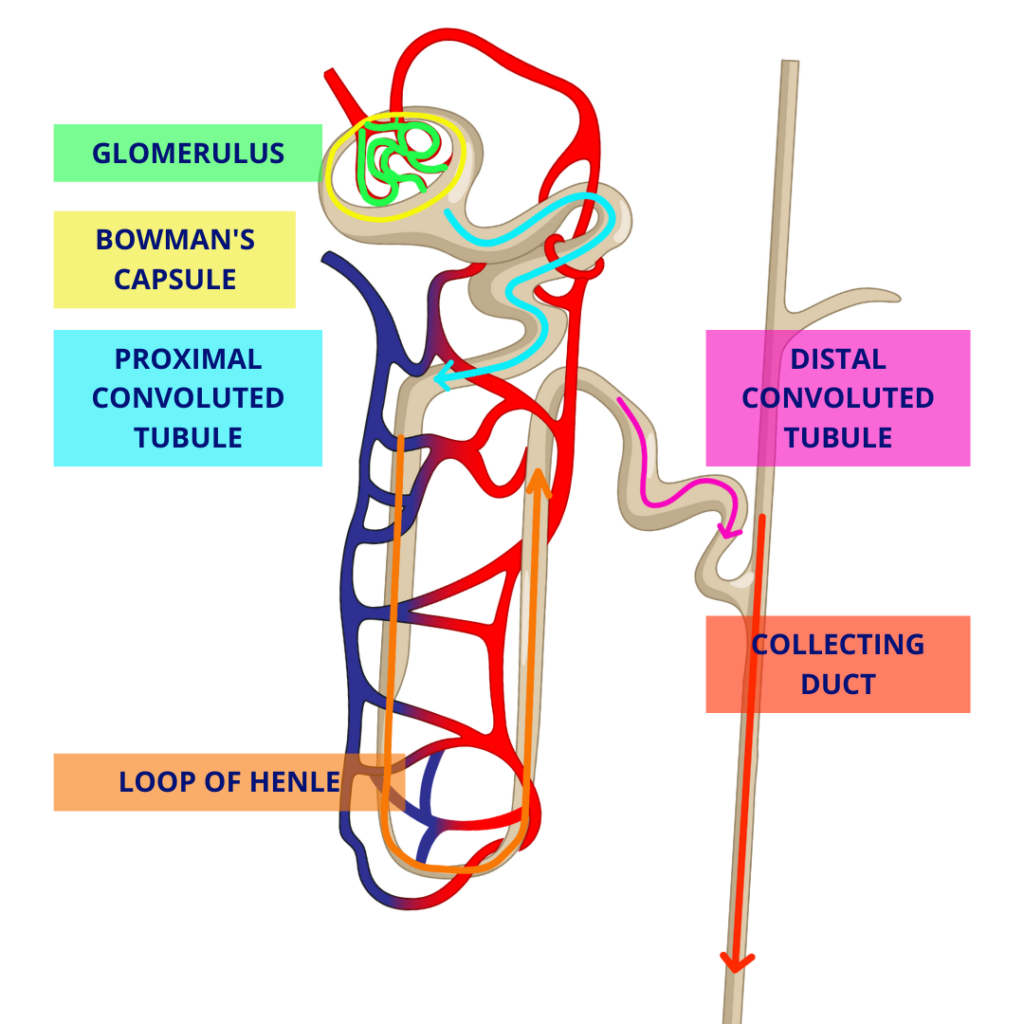The nephron is the structural and functional unit of the kidney. All of the excretory processes happen in the nephron with one or more occurring in each of its parts– from filtration, reabsorption, secretion, to elimination of wastes.
By being familiar with the structure of the nephron, we will be able to clearly follow when or where these processes take place.
Let’s look at the different parts of the nephron and identify the processes involved.
Renal Corpuscle
The renal corpuscle is made up of two major parts:

- Glomerulus
- This is where the first step in urine formation occurs.
- The process that takes place is called filtration.
- Blood enters the renal corpuscle through the afferent arteriole. As it passes through the glomerulus, the blood is filtered allowing for smaller molecules with sizes of < 1.8nm from the blood to get filtered out.
- The filtrate then moves into the Bowman’s capsule while the rest continues to flow to the efferent arteriole.
- Bowman’s Capsule
Proximal Convoluted Tubule
Processes that take place: reabsorption (of the “good stuff” that got filtered out from the blood in the glomerulus) and secretion.
Loop of Henle
The Loop of Henle has an ascending limb and a descending limb.
Processes that take place: More reabsorption. Yes, we’re taking more good stuff out of the filtrate to return it back to the blood so that it can be used by the body.
Distal Convoluted Tubule
Processes that take place: More reabsorption! And, secretion.
Collecting Duct
Processes that take place: More reabsorption and secretion.
The collecting duct is where urine is “collected”. But, even at this point, some of the good stuff from the filtrate is still being reabsorbed back to the blood.
Remember, each kidney has about one to two million nephrons, and each one of them has all these processes taking place.
When the blood is initially filtered in the glomerulus, about 180L of filtrate daily is produced. But, because of how many times the filtrate undergoes reabsorption to return all the good stuff back to the blood, this amount goes down to a few liters per day of urine.
From the collecting duct, the urine is led out of the kidney through the renal pelvis, down to the ureter, bladder, and urethra. Urine is stored in the bladder until it is filled, which then gets excreted out of the system through the urethra.

Summary
As you can see, the bulk of the processes occur in the nephrons of the kidneys. To gain a deeper understanding of filtration that occurs in the glomerulus, go ahead and read the article or watch the next video episode in this series where we dive into the topic of Glomerular Filtration Rate.
